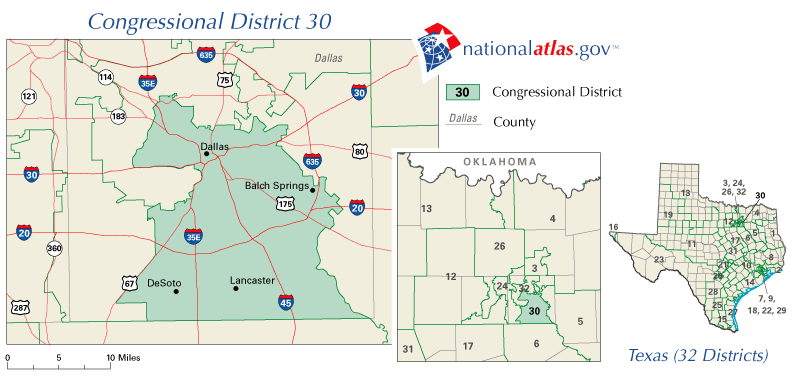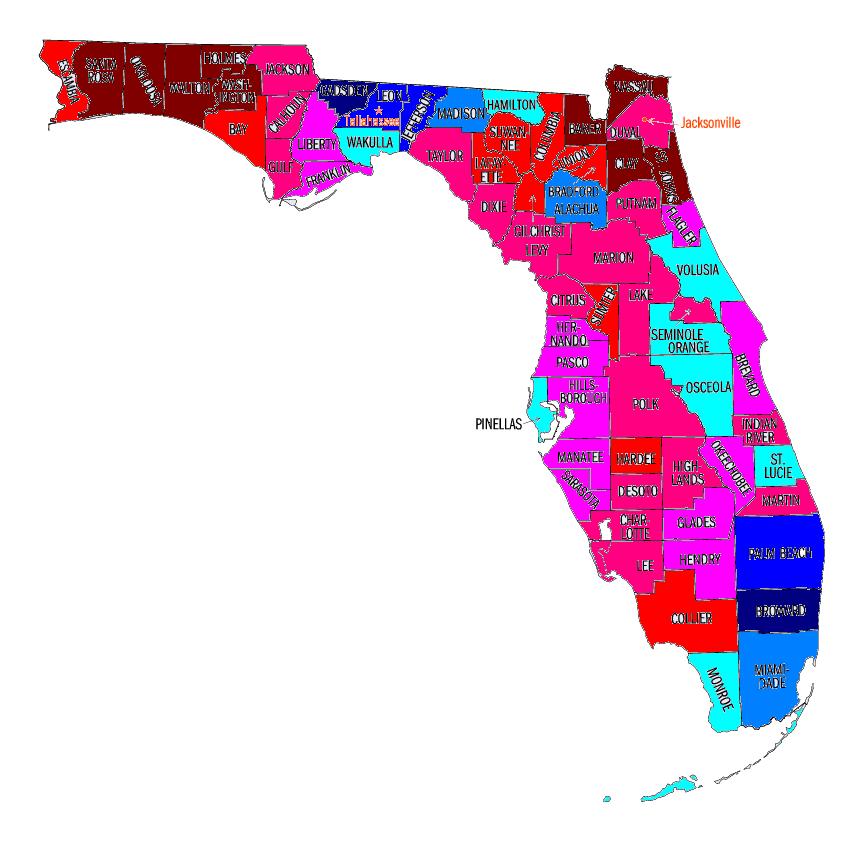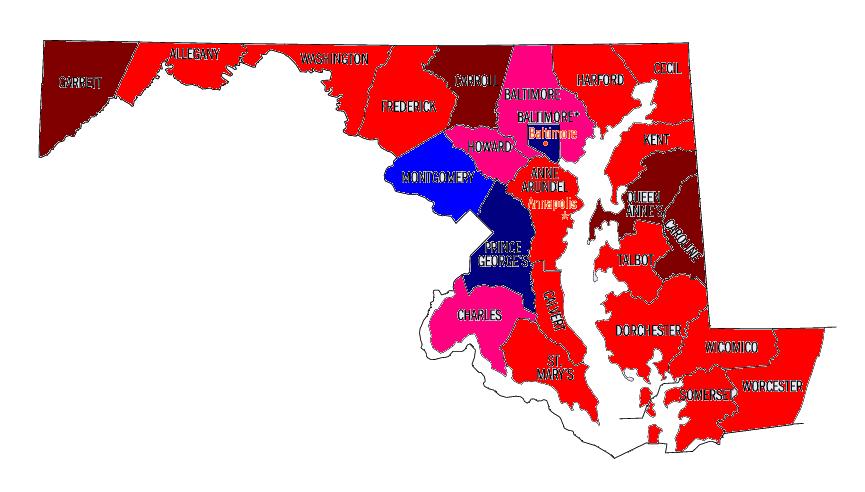In today's daily digest, it was posted that Team Blue and the GOP are trying to hammer out a compromise that would effectively split Texas' four new congressional districts: two for Democrats and two for Republicans. (The article can be found here.)
For a little while, I've been working on a diary examining whether the VRA helps or hurts Team Blue, specifically in the South. My first diary was going to be about Texas, specifically the Metroplex and the near-the-border districts. So, while that diary might still happen, I think it would be interesting to use Dave's Redistricting App to examine how this proposed compromise would affect the Texas Congressional delegation.
DISCLAIMER: All districts are drawn as a Republican gerrymander, keeping with VRA restrictions. Also, incumbent homes are largely ignored.
As many of you know, Texas is supposed to gain four congressional seats from the upcoming Census. If they only gain three, then this is all moot, but let's assume that they'll gain four.
Over the past four years, the Dallas-Ft. Worth Metroplex has experienced rapid population growth, specifically Hispanic population growth. In fact, the MSA grew by almost exactly 25% since the 2000 census–a little more than one million people. Therefore, the area should gain a district an a half.
As it stands right now, there are eight districts that occupy part of Tarrant County (Ft. Worth, Arlington) or Dallas County: seven are GOP seats and one is occupied by Eddie Bernice Johnson, who represents a minority-majority district that sucks up a whole lot of Democratic votes.
After the DeLaymander, DavidNYC posted a good explanation of the VRA that would affect any redistricting process:
But #3 is, perversely, what gets us. The Voting Rights Act is a very complex piece of legislation, and the litigation interpreting it is very, very hard to get a handle on. But at its core, the VRA says that redistricters must try to maximize the number of "majority-minority" districts – ie, districts where cohesive minorities constitute a sufficiently large bloc such that this group's will is likely to prevail at election time.
This means that Texas redistrict-ers must maximize the majority-minority districts in the Metroplex. After the 2010 census, if the GOP has control over of the Senate, the House, and the governor’s mansion (which is probable, but not a foregone conclusion), they must create two majority-minority districts, something like this:

The turquoise and the yellow snake-like districts in Ft. Worth and Dallas are the minority-majority districts.
Yellow District:
Obama: 80%
McCain: 20%
White: 27%
Black: 51%
Hispanic: 18%
Turquoise District:
Obama: 62%
McCain: 37%
White: 27%
Black: 9%
Hispanic: 61%
The rest of the districts all had 45% or less for Obama.
A black majority and a Hispanic majority district should come out of this process. The current 30th (seen below) has the 2000 Census demographics:
White: 36.6%
Black: 41.8%
Hispanic: 34.8%

There’s no way that could pass VRA muster right now. So, from the two new VRA districts in the Metroplex, Democrats automatically gain a safe seat without any deal.
Now, we explore Houston, where Hispanic growth has occurred over the past ten years. To accommodate the VRA, a new Hispanic district must be drawn. Further, both black plurality districts must remain. It should look something like this:

I used MattTX2’s bipartisan compromise as inspiration for the boundaries. However, my pink Hispanic district is much less Democratic. Here are the results:
Pink District:
Obama: 52%
McCain 47%
White: 35%
Black: 8%
Hispanic: 51%
Blue District:
Obama: 59%
McCain: 41%
White: 27%
Black: 12%
Hispanic: 58%
Beige District:
Obama: 79%
McCain: 21%
White: 17%
Black: 47%
Hispanic: 24%
Army Green District (Northern District)
Obama: 65%
McCain: 35%
White: 34%
Black: 38%
Hispanic: 22%
Now, the pink district is barely a Hispanic majority district, so it could be argued that there are not enough voting age Hispanics to make it a VRA-protected districts (I’ll get to that later). So, the district might need to change shapes and might need to add more Hispanic precincts (making it more Democratic). I would think that this would be a safe Democratic seat, so a Hispanic Dem would win here. Without the deal, we just picked up two seats.
Here’s where it gets complicated:

Southern Texas. Let’s ignore the El Paso seat because it’s a safe Dem seat anyway. Let’s also ignore the yellow suburban San Antonio seat because it’s safely Republican and not completely drawn (and Lamar Smith’s). Here, we have six VRA-protected Hispanic seats. They cannot be packed along the border (no McAllen-only district) because that would put too many Hispanics in one district, which was ruled unconstitutional after the DeLaymander.
Let’s go left to right.
PURPLE DISTRICT
Obama: 47%
McCain: 52%
White: 37%
Black: 3%
Hispanic: 58%
When Bonilla was the congressman for this district, it was R+14. After the DeLaymander, the district was ruled unconstitutional because it didn’t have enough Hispanics of voting age. Well, this district is 58% Hispanic now, compared to Ciro Rodriguez’s current district, which has 55%. So I think this would pass muster. This is where the GOP can screw everything up (and open a whole big can of worms). They can draw this district to elect a Hispanic Republican, but they will be open to lawsuits as it takes in heavily conservative white suburban parts–but, hey, it’s a gerrymander! We can still hold this seat, but it gets harder.
Red District
Obama: 54%
McCain: 45%
White: 33%
Black: 7%
Hispanic: 57%
This would be frustrating for Dems, as Cuellar now has to enter San Antonio. Still, this is a safe Dem district.
Green District
Obama: 50%
McCain: 50%
White: 27%
Black: 3%
Hispanic: 69%
A newly-created district, we would be competitive, but I think it would be hard. However, with changing demographics, I think this is winnable very soon.
The District With Brooks County (sorry, I don’t know what color that is)
Obama: 61%
McCain: 38%
White: 18%
Black: 1%
Hispanic: 80%
Corpus Christi District
Obama: 52%
McCain: 47%
White: 28%
Black: 3%
Hispanic: 67%
San Antonio Blue District
Obama: 66%
McCain: 33%
White: 19%
Black: 5%
Hispanic: 74%
Here are some more close ups:


What this means is that the Purple and Green districts would become ultra competitive (and lean Republican). Still, the demographics changes could eventually lead to a Dem flip.
Conclusion:
Even without such a deal, we will likely gain two seats due to the VRA anyway. In addition, one of the other added seats is a Hispanic majority seat in Southern Texas that would be a tossup.
Since the Dems have a little leverage (a possible gubernatorial win or a possible takeover of the House), they could push to take the two of the newly-drawn districts Dallas and Houston districts (which they’ll get anyway), protect Edwards, and draw all of the Southern districts. I think that would probably be the best.
And, lastly, this took forever!!! So please comment and tell me what you think.








